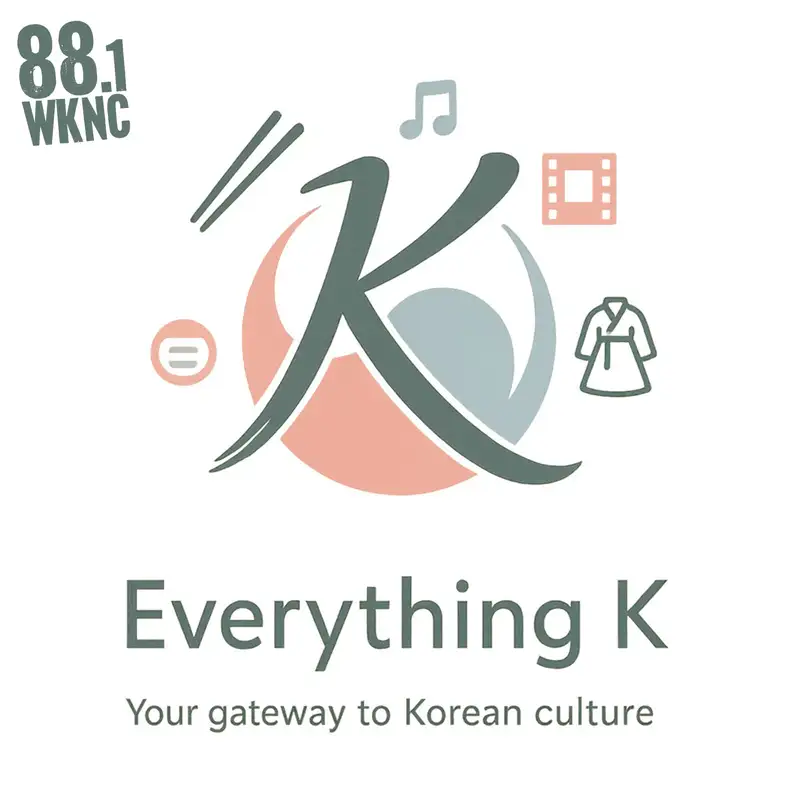PJ 0:01
Annyeonghaseyo!, welcome to everything. K, your getaway to the Korean culture. I am PJ, and today we are embarking on a flavorful journey through the rich and diverse world of Korean cuisine, from the ancient roots of Korean food to the modern day street food craze. We'll explore the stories, taste and ritual that make up The heart and soul of Korea's vibrant cultural landscape.
PJ 1:07
to truly understand Korean food, we need to start at its roots, where tradition agriculture and time honed practices come together to shape every bite. Korean cuisine is deeply rooted in ancient agricultural and nomadic traditions evolving through centuries in response to Korea's unique climate and cultural shifts.
PJ 1:33
At the heart of every Korean meal is rice, simple yet vital. Accompanying the rice is an array of banchan, small side dishes that offer a variety of flavors and textures. These often include fermented vegetables like kimchi, seasoned greens and pickled items.
PJ 2:04
Did you know there are many types of kimchis? One of the most common is Baechu kimchi, made with napa cabbage and seasoned with chili flakes, garlic, ginger and fish sauce. But kimchi isn't just limited to this variety. You have Kkakdugi, which is cubed radish kimchi, Oi Sobagi, a stuffed cucumber kimchi, and Chonggak kimchi made with young radishes. Each type has its unique flavor and texture, and they differ depending on the region, season and family recipes.
PJ 3:41
In Korea, meals are meant to be shared. Banchan are placed in the center of table, allowing everyone to grab from the same array of dishes.
PJ 5:19
bibimbap. Origins date back from Joseon Dynasty, where it was a practical way to combine leftovers and offerings from ancestor rights into a harmonious dish. Then there is Bulgogi, thinly sliced beef marinated in soy sauce, sesame oil, garlic and sugar, grilled to tender perfection,
PJ 5:58
For something heartier, Kimchi Jjigae is a warm stew made from aged kimchi, tofu, pork and vegetables. Its beloved for its bold, fermented flavors that deepen as it simmers.
PJ 6:16
And let's not forget about Ramyeon , Korea's own version of instant noodles, known for its spicy, savory broth and chewy noodles, add some kimchi, a boiled egg or cheese, and you have got a meal that became pop culture icon in Korea. Every culture has its special dishes for important occasions, and Korea is no different. One of the most significant is seaweed soup, which is traditionally eaten on birthdays. The seaweed used in the soup is rich in nutrients and symbolizes the nourishing love of her mother.
PJ 6:57
It's believed that eating the soup on your birthday is a way to honor the sacrifice your mother made for you, as well as the reminder of the nurturing and life giving powers of seaweed. But why seaweed? It was noticed that the whales used to eat the seaweed after giving birth, and it was adopted from there. Similarly, tteok rice cakes are often consumed during celebrations like weddings and New Years. Each type of rice cake holds its own significance, but the most common trend is that this symbolizes prosperity, good fortune and the sharing of joy with loved ones when it comes to truly experiencing the pulse of Korean cuisine, there is nothing like the vibrant world of Korean street food.
PJ 7:58
Imagine this a small food stall covered with a bright red, orange tarp, nested on a bustling
PJ 8:07
The air is thick with the inching smell of sizzling food, spicy, sweet, Gochujang, crispy, fried oil and smoky grilled meats, the clang of metal utensils against hot pans, the chatter of hungry passersby and the occasional honk of a car create a symphony of sounds that embody the energy of Korean street food, the odeng fish cake cart steaming With skewers of fish cakes floating in a savory broth, giving a warming aroma perfect for cold evenings
PJ 8:48
Tteokbokki, chewy rice cakes coated in a sticky, spicy, sweet sauce, is another street food staple. This dish was once a royalty delicacy, but today, it's the quintessential quick snack beloved by all ages.
PJ 9:06
Then there is Hotteok , a sweet, crispy pancake stuffed with brown sugar, cinnamon and nuts, often served in the winter months as a comforting treat.
PJ 9:19
And of course, Bungeoppang, a fish shaped pastry filled with sweet red bean paste, is a favorite with children and adults alike. These street foods aren't just quick bites. They tell the story of Korean culture, community and culinary evolution. No Korean meal is complete without a drink to accompany it. Let's start with soju, the most famous alcoholic beverage in Korea.
PJ 10:39
banana milk quickly became a cultural phenomenon, initially created as a way to introduce milk to Korean children. Its creamy, sweet taste and iconic yellow packaging made it a favorite that still holds a special place in the heart of many Koreans today, before we wrap up, here are some fun facts about Korean food. Did you know NASA developed a special space safe kimchi for Korean astronaut Yi So-yeon in 2008
PJ 11:20
Kimchi fridge is a real thing in Korea. Many households have a separate refrigerator just for kimchi. Why? Because kimchi is so pungent and fermented, it can overpower everything else in your refrigerator. The kimchi fridge even controls the temperature and humidity. Specifically for the perfect fermentation process, you can get kimchi flavored everything from kimchi flavored chocolate to kimchi ice cream. Adventurous Korean snacks makers have tried it all. It's the national flavor, and they take it very seriously. Soju outsells every other liquor in the world, the tiny green bottle. It outsells vodka, whiskey and drum globally. In fact, Jinro Soju is the most sold liquor brand in the world. Koreans drink more than 3 billion bottles a year. Banana milk once saved the nation's health plan. Banana milk wasn't introduced just for fun. The Korean government actually used it to increase milk consumption among children after the Korean War. Turns out banana flavored milk was more appealing than plain milk, and it worked so well, it's now culturally iconic. Spluring is totally fine. In fact, it's encouraged. Loud. Splurring while eating ramyeon or noodles isn't considered rude in Korea. It's a sign that you're enjoying your food. Bonus points if you also look slightly tortured by the spice, some Koreans eat live octopus that wiggles on the plate. Yes, Sannakji is real thing. The octopus is chopped alive, served immediately, and the tentacles are still moving. You have to chew thoroughly so it doesn't stick in your throat. It's wild and not for the faint hearted.
PJ 14:59
Dive into the world of K Dama and explore why they have captured the hearts of millions around the world. Until then, Annyeonghaseyo!
Transcribed by https://otter.ai


